*/
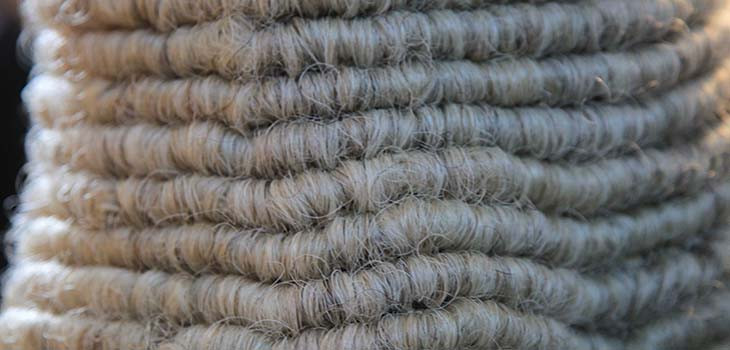
Hours before the close of business for the Christmas holidays, the Ministry of Justice (MOJ) announced the list of those who would be appointed King’s Counsel in 2023. There had been 279 applicants, the second highest number since 2009. Ninety-five succeeded – the lowest since 2014. Of the 95, 94 are self-employed barristers. Although the appointments panel annually expresses its regrets at the lack of applicants from employed barristers and solicitor advocates, this is their second worst year since 2007. Out of 16 employed barristers and solicitor advocates, only one was appointed, an international arbitration litigator at Herbert Smith Freehills.
The annual report of the selection panel explains in detail how they went about their job. It is worth noting that they interview applicants unless – having regard to the assessments from the assessors and the candidate’s own self-assessment – ‘they have no reasonable prospects of success’. Whatever a candidate may think of themselves, what appears crucial is what the people who have seen them in action think about them, including the solicitors who instruct them and the judges before whom they appeared. Of the 279 applicants, 135 or 48% (higher than in recent years) were found to have no reasonable prospects of success and were filtered out.
Many unsuccessful candidates understandably have another go, perhaps having learned a few lessons. The statistics show that some did, whereas some may simply not be able to fulfil the panel’s criteria. Thirty-nine per cent of the applicants (108 people) had tried at least once before in the previous three years. Of those 108, 58 (53%) were invited for interview. Of the 50 who were not, 28 had not been invited before either but 22 had been. Thirty-five second-timers were appointed, which is 32% of their total. Of the 171 first-timers, 87 (50%) were invited for interview. However, 68% of them emerged from interview with success, as opposed to 60% of the second timers.
The most likely to succeed are, as in the past, the youngest and perhaps the most precocious. This year there were 28 applicants aged 40 or younger. Of those, 20 (71%) were invited to interview and 15 (54%) were appointed, both well above the overall scores. The largest number (171) were aged 41-50. They had a success rate of 35%, just above the overall 34.1%. There were 80 applicants who were 51 and over. Only 34 (42%) were invited for interview and 19 (24%) were appointed, well below the overall averages.
Looking at their practices, 63 out of 95 had primarily civil practices, 10 had family and 17 did crime. A further five considered they had a mixed civil and family or criminal and civil practice. Civil practitioners always predominate in these lists and their 70% this year is typical. The number of new family silks only reached double figures (11) a few years ago so the pattern has continued. It is in crime where the numbers have not held up. Looking at the last five years, the number of successful applicants doing crime averaged 33. One has to go back several years to find the numbers below 20.
‘Civil’ work encompasses a wide range. Having looked at the chambers website of each successful candidate, one notes a roughly equal number of those who do public law (including immigration, actions against the police and human rights) and those doing a range of commercial litigation. They are followed by clinical negligence, civil fraud, employment, construction (four), tax (two) and Chancery, with one each for shipping and for intellectual property. Of the 10 doing family, eight primarily do children cases while two specialise in money. There are an equal number of men and women doing both. The criminal practitioners take in the full range of criminal work.
The youngest (based on call dates) are found in civil work. A third were called from 2005 onwards (including two former solicitors called respectively in 2013 and 2015), 28% in 2001-04, and 17% in 1998-2000. In crime, 14 (82%) were called 1992-2000, and three in 2003-04. Of the new family silks, half were called in 2001-04, one in 2005 and one in 2008.
The appointments panel has traditionally wanted prospective applicants to understand that the days when it was a ‘requirement’ to be an Oxbridge graduate were over, even though the panel does not in fact ask where anyone was educated. Nevertheless the pattern of educational background remains the same each year. This may reflect how chambers years ago chose these people as pupils. Some do not give their university on their chambers website. Of those in civil work who do, 34 or 79% went to Oxford or Cambridge, the rest going to other Russell Group universities or Australia or New Zealand. Among the 34 were 10 Firsts, four Cambridge Double Firsts, an Oxford Double First, an Oxford Double First ‘second in university’ and a Cambridge ‘Top First’. Half of the 10 family silks went to Oxford or Cambridge, with three others at Leeds, Durham and Exeter respectively. Of the 17 criminal silks, six went to Oxbridge (including two Firsts). This year the 24 Cambridge graduates were a quarter of the entire cohort.
If one looks at chambers, one is reminded yet again that this is a process which is only relevant to a tiny number of barristers and a tiny number of chambers where, one is left to conclude, the silk work is to be found. To say that the cohort is not representative of the Bar at large, let alone British society, is to state the obvious. It can’t be.
As usual every new silk is in chambers that already has KCs. Since at least 2016 there has never been more than one who wasn’t. The average number of existing silks in chambers for civil practitioners is 22; 10 for family practitioners and 16 for criminal practitioners. According to Bar Standards Board statistics, there are 414 sets of chambers with more than one barrister. The cohort of new King’s Counsel came from 58 sets of chambers, one of the lowest numbers recently. The most prolific, at four new silks each, were Garden Court, Doughty Street and Matrix. Four sets had three each. This means that seven sets, all in London, produced a quarter of the entire cohort.
Civil work is more likely to concentrate in London. Of the 68 people who cited civil as their sole or part area of practice, only five practise in one of the four civil chambers based outside London. Crime is more spread out – six London chambers and nine chambers outside London are represented. Of the family practitioners, four are based outside London (St Ives, Manchester, Bristol, Chester); the other six are in one of the three sets of London chambers this year.
The appointments panel itself keeps some personal statistics, relating largely to diversity. First, gender. Between 1995 and 2015/16 the number of woman applicants remained steady. Both before and after the establishment of the appointments panel and despite all exhortations to apply, they averaged 44 per year. Then, in 2016-17, it rose to an average of 53 for four years. Since 2020 it has reached the 70s – 72, 73 and this year, 77, the highest figure to date, or 28% of the total. Women applicants did proportionately better than men, as they have done in 22 of the last 27 years: 47% of women applicants were recommended compared to 29% of the men. The raw number – 36 – is lower than in 2020 and 2021 but higher than in any other year. Since 2017, the total number of male KCs has gone up from 1,409 to 1,487, a rise of 78 or 5.5%. The number of female KCs has gone up from 254 to 334, a rise of 80 or 31%. The figures may indicate that the silks who have retired since 2017 were largely men.
The figures for ethnicity are not broken down between men and women. Between 1995 and 2012/13, 324 barristers who declared their ethnicity to be other than White applied for silk, an average of 20 per year of whom an average of 5.5 or 27% were successful. In the next nine years, 314 candidates or 35 per year applied, of whom 130 were appointed, a success rate of 41%. The figures for 2022 are comparable: 43 applicants, 24 of whom were interviewed (a higher percentage than for White applicants). Fourteen were appointed, a success rate of 33% or 1% below those of White applicants. They are divided between civil and criminal practitioners. There is no breakdown as to which ethnicities are in which specialisms, neither is this related, say, to age or gender. Neither is ‘BAME’ broken down between different ethnicities.
However, on the website is an analysis of the five years, 2017-2021, which does break down the number of applications and how many of them were successful, in the three categories of Asian/Asian British; Black African/Caribbean; and ‘other’. The number of ‘other’ is relatively low: an average of 7.4 applications per year but a success rate of 49.6%. Black barristers averaged just under six applications per year with a success rate of 31.4%. Asian barristers averaged 21.4 applications per year with a success rate of 49.4%. Only once since 1995 have White barristers exceeded 49.4% (50%, 10 years ago).
The question relating to sexual orientation receives the highest number of non-replies. Those who did declare themselves as gay men or women have again achieved the highest success rate: 10 applied, eight were interviewed and seven were recommended as was one of the three bisexual applicants. It must be emphasised that all these questions about the candidates themselves play no part in the selection process.
Needless to say there is nothing published which could identify the unsuccessful applicants. The only people who know are the candidates themselves, each of whom receives a feedback letter. Should they be willing to share them, and should anyone care to do research on why in fact people fail the process, these letters would be the evidence-based starting point. For those who wish to know what the candidates themselves thought of the process, however, the results of a feedback survey in 2021 can be found on the website. Unsurprisingly, those who succeeded were most likely to return the form and to feel satisfied. One notes here that a substantial majority of respondees spent more than 32 hours on completing the form: this is not something to be entered into casually.
The selection process is a snapshot of one’s practice at this stage. It is a mark of quality which not only recognises what one has done so far but seeks to speak as well of how one will continue to do over the next 20, 30 or 40 years. There is no quality assurance and no one checks on whether in the event the panel got it right.
At the ceremony in March, the 95 practitioners will be honoured together with the Honorary KCs. They are chosen entirely separately, by the MOJ. The Ministry does not use ‘excellence’ which is key to the panel’s decisions (‘excellence in advocacy in difficult cases’). Any member of the public can nominate any lawyer or academic. Effective administrators or people who have taken important projects forward are as eligible as distinguished academics who have achieved important research, written books and affected the development of the law. The criterion is whether one has made a ‘significant positive impact’ on the law or the profession; ‘it’s the scale of the impact that is important’, and that impact can be in a number of areas, including social mobility and diversity.
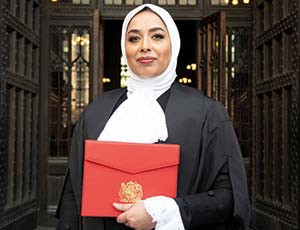
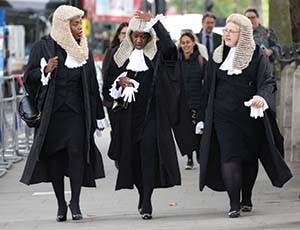
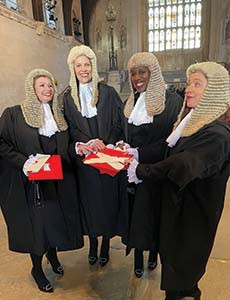

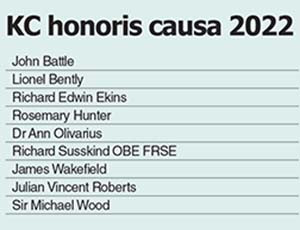
For more silk application insight and advice, including what to expect at interview and when is the 'right' time to apply, see Counsel's 2023 Silk Supplement.

Hours before the close of business for the Christmas holidays, the Ministry of Justice (MOJ) announced the list of those who would be appointed King’s Counsel in 2023. There had been 279 applicants, the second highest number since 2009. Ninety-five succeeded – the lowest since 2014. Of the 95, 94 are self-employed barristers. Although the appointments panel annually expresses its regrets at the lack of applicants from employed barristers and solicitor advocates, this is their second worst year since 2007. Out of 16 employed barristers and solicitor advocates, only one was appointed, an international arbitration litigator at Herbert Smith Freehills.
The annual report of the selection panel explains in detail how they went about their job. It is worth noting that they interview applicants unless – having regard to the assessments from the assessors and the candidate’s own self-assessment – ‘they have no reasonable prospects of success’. Whatever a candidate may think of themselves, what appears crucial is what the people who have seen them in action think about them, including the solicitors who instruct them and the judges before whom they appeared. Of the 279 applicants, 135 or 48% (higher than in recent years) were found to have no reasonable prospects of success and were filtered out.
Many unsuccessful candidates understandably have another go, perhaps having learned a few lessons. The statistics show that some did, whereas some may simply not be able to fulfil the panel’s criteria. Thirty-nine per cent of the applicants (108 people) had tried at least once before in the previous three years. Of those 108, 58 (53%) were invited for interview. Of the 50 who were not, 28 had not been invited before either but 22 had been. Thirty-five second-timers were appointed, which is 32% of their total. Of the 171 first-timers, 87 (50%) were invited for interview. However, 68% of them emerged from interview with success, as opposed to 60% of the second timers.
The most likely to succeed are, as in the past, the youngest and perhaps the most precocious. This year there were 28 applicants aged 40 or younger. Of those, 20 (71%) were invited to interview and 15 (54%) were appointed, both well above the overall scores. The largest number (171) were aged 41-50. They had a success rate of 35%, just above the overall 34.1%. There were 80 applicants who were 51 and over. Only 34 (42%) were invited for interview and 19 (24%) were appointed, well below the overall averages.
Looking at their practices, 63 out of 95 had primarily civil practices, 10 had family and 17 did crime. A further five considered they had a mixed civil and family or criminal and civil practice. Civil practitioners always predominate in these lists and their 70% this year is typical. The number of new family silks only reached double figures (11) a few years ago so the pattern has continued. It is in crime where the numbers have not held up. Looking at the last five years, the number of successful applicants doing crime averaged 33. One has to go back several years to find the numbers below 20.
‘Civil’ work encompasses a wide range. Having looked at the chambers website of each successful candidate, one notes a roughly equal number of those who do public law (including immigration, actions against the police and human rights) and those doing a range of commercial litigation. They are followed by clinical negligence, civil fraud, employment, construction (four), tax (two) and Chancery, with one each for shipping and for intellectual property. Of the 10 doing family, eight primarily do children cases while two specialise in money. There are an equal number of men and women doing both. The criminal practitioners take in the full range of criminal work.
The youngest (based on call dates) are found in civil work. A third were called from 2005 onwards (including two former solicitors called respectively in 2013 and 2015), 28% in 2001-04, and 17% in 1998-2000. In crime, 14 (82%) were called 1992-2000, and three in 2003-04. Of the new family silks, half were called in 2001-04, one in 2005 and one in 2008.
The appointments panel has traditionally wanted prospective applicants to understand that the days when it was a ‘requirement’ to be an Oxbridge graduate were over, even though the panel does not in fact ask where anyone was educated. Nevertheless the pattern of educational background remains the same each year. This may reflect how chambers years ago chose these people as pupils. Some do not give their university on their chambers website. Of those in civil work who do, 34 or 79% went to Oxford or Cambridge, the rest going to other Russell Group universities or Australia or New Zealand. Among the 34 were 10 Firsts, four Cambridge Double Firsts, an Oxford Double First, an Oxford Double First ‘second in university’ and a Cambridge ‘Top First’. Half of the 10 family silks went to Oxford or Cambridge, with three others at Leeds, Durham and Exeter respectively. Of the 17 criminal silks, six went to Oxbridge (including two Firsts). This year the 24 Cambridge graduates were a quarter of the entire cohort.
If one looks at chambers, one is reminded yet again that this is a process which is only relevant to a tiny number of barristers and a tiny number of chambers where, one is left to conclude, the silk work is to be found. To say that the cohort is not representative of the Bar at large, let alone British society, is to state the obvious. It can’t be.
As usual every new silk is in chambers that already has KCs. Since at least 2016 there has never been more than one who wasn’t. The average number of existing silks in chambers for civil practitioners is 22; 10 for family practitioners and 16 for criminal practitioners. According to Bar Standards Board statistics, there are 414 sets of chambers with more than one barrister. The cohort of new King’s Counsel came from 58 sets of chambers, one of the lowest numbers recently. The most prolific, at four new silks each, were Garden Court, Doughty Street and Matrix. Four sets had three each. This means that seven sets, all in London, produced a quarter of the entire cohort.
Civil work is more likely to concentrate in London. Of the 68 people who cited civil as their sole or part area of practice, only five practise in one of the four civil chambers based outside London. Crime is more spread out – six London chambers and nine chambers outside London are represented. Of the family practitioners, four are based outside London (St Ives, Manchester, Bristol, Chester); the other six are in one of the three sets of London chambers this year.
The appointments panel itself keeps some personal statistics, relating largely to diversity. First, gender. Between 1995 and 2015/16 the number of woman applicants remained steady. Both before and after the establishment of the appointments panel and despite all exhortations to apply, they averaged 44 per year. Then, in 2016-17, it rose to an average of 53 for four years. Since 2020 it has reached the 70s – 72, 73 and this year, 77, the highest figure to date, or 28% of the total. Women applicants did proportionately better than men, as they have done in 22 of the last 27 years: 47% of women applicants were recommended compared to 29% of the men. The raw number – 36 – is lower than in 2020 and 2021 but higher than in any other year. Since 2017, the total number of male KCs has gone up from 1,409 to 1,487, a rise of 78 or 5.5%. The number of female KCs has gone up from 254 to 334, a rise of 80 or 31%. The figures may indicate that the silks who have retired since 2017 were largely men.
The figures for ethnicity are not broken down between men and women. Between 1995 and 2012/13, 324 barristers who declared their ethnicity to be other than White applied for silk, an average of 20 per year of whom an average of 5.5 or 27% were successful. In the next nine years, 314 candidates or 35 per year applied, of whom 130 were appointed, a success rate of 41%. The figures for 2022 are comparable: 43 applicants, 24 of whom were interviewed (a higher percentage than for White applicants). Fourteen were appointed, a success rate of 33% or 1% below those of White applicants. They are divided between civil and criminal practitioners. There is no breakdown as to which ethnicities are in which specialisms, neither is this related, say, to age or gender. Neither is ‘BAME’ broken down between different ethnicities.
However, on the website is an analysis of the five years, 2017-2021, which does break down the number of applications and how many of them were successful, in the three categories of Asian/Asian British; Black African/Caribbean; and ‘other’. The number of ‘other’ is relatively low: an average of 7.4 applications per year but a success rate of 49.6%. Black barristers averaged just under six applications per year with a success rate of 31.4%. Asian barristers averaged 21.4 applications per year with a success rate of 49.4%. Only once since 1995 have White barristers exceeded 49.4% (50%, 10 years ago).
The question relating to sexual orientation receives the highest number of non-replies. Those who did declare themselves as gay men or women have again achieved the highest success rate: 10 applied, eight were interviewed and seven were recommended as was one of the three bisexual applicants. It must be emphasised that all these questions about the candidates themselves play no part in the selection process.
Needless to say there is nothing published which could identify the unsuccessful applicants. The only people who know are the candidates themselves, each of whom receives a feedback letter. Should they be willing to share them, and should anyone care to do research on why in fact people fail the process, these letters would be the evidence-based starting point. For those who wish to know what the candidates themselves thought of the process, however, the results of a feedback survey in 2021 can be found on the website. Unsurprisingly, those who succeeded were most likely to return the form and to feel satisfied. One notes here that a substantial majority of respondees spent more than 32 hours on completing the form: this is not something to be entered into casually.
The selection process is a snapshot of one’s practice at this stage. It is a mark of quality which not only recognises what one has done so far but seeks to speak as well of how one will continue to do over the next 20, 30 or 40 years. There is no quality assurance and no one checks on whether in the event the panel got it right.
At the ceremony in March, the 95 practitioners will be honoured together with the Honorary KCs. They are chosen entirely separately, by the MOJ. The Ministry does not use ‘excellence’ which is key to the panel’s decisions (‘excellence in advocacy in difficult cases’). Any member of the public can nominate any lawyer or academic. Effective administrators or people who have taken important projects forward are as eligible as distinguished academics who have achieved important research, written books and affected the development of the law. The criterion is whether one has made a ‘significant positive impact’ on the law or the profession; ‘it’s the scale of the impact that is important’, and that impact can be in a number of areas, including social mobility and diversity.





For more silk application insight and advice, including what to expect at interview and when is the 'right' time to apply, see Counsel's 2023 Silk Supplement.


Chair of the Bar reflects on 2025
AlphaBiolabs has donated £500 to The Christie Charity through its Giving Back initiative, helping to support cancer care, treatment and research across Greater Manchester, Cheshire and further afield
Q&A with criminal barrister Nick Murphy, who moved to New Park Court Chambers on the North Eastern Circuit in search of a better work-life balance
Revolt Cycling in Holborn, London’s first sustainable fitness studio, invites barristers to join the revolution – turning pedal power into clean energy
Rachel Davenport, Co-founder and Director at AlphaBiolabs, reflects on how the company’s Giving Back ethos continues to make a difference to communities across the UK
By Marie Law, Director of Toxicology at AlphaBiolabs
Are you ready for the new way to do tax returns? David Southern KC explains the biggest change since HMRC launched self-assessment more than 30 years ago... and its impact on the Bar
Professor Dominic Regan and Seán Jones KC present their best buys for this holiday season
Oscar Davies shares their lessons learnt
Little has changed since Burns v Burns . Cohabiting couples deserve better than to be left on the blasted heath with the existing witch’s brew for another four decades, argues Christopher Stirling
Pointillism, radical politics and social conscience. Review by Stephen Cragg KC